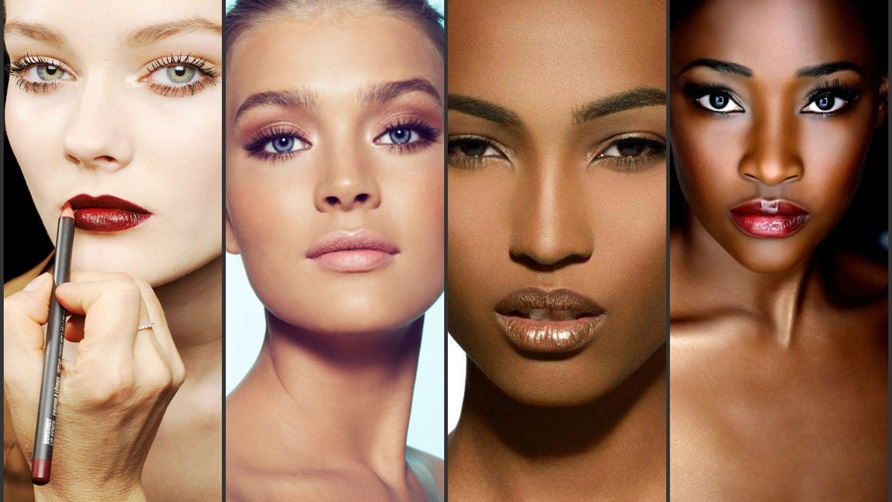One of the most enjoyable aspects of makeup is that it allows you to express yourself, whether you're experimenting with various blush applications, toying with foundation finishes, or wearing a strong lipstick color. While there are no hard and fast rules for applying makeup, understanding how to choose the appropriate lipstick for your skin tone is powerful, particularly when you're standing in front of a display full of lovely hues and can't decide which one to purchase. After all, you want to wear lipstick that brightens your skin and makes you feel like a million dollars. Scroll down for the finest lipstick tips & techniques.
Factors to Consider When Choosing a Lipstick Color
You'll most likely discover that a substantial majority of the lipstick hues accessible to you fit well with your skin tone. Still, there are several aspects to consider while deciding what color lipstick to wear.
Skin Tone
The same shade of red lipstick may look great on a variety of complexion tones. With that in mind, don't think you can only wear black lipstick if you have dark complexion or pale lipstick if you have light skin. What matters most are your skin's undertones. From then, it's all about personal taste, creative expression, and the appearance you want to accomplish.
Complexion Undertones

How to select the best lipstick for your skin tone? Determine your skin undertone. (Plus, after you've done this, you can apply this knowledge to anything from blush to foundation to nail polish.)
- Cool: People with cool undertones have a pink, red or even slightly blue hue to their skin. One trick for determining your undertone is to look at your veins. If you have a cool complexion, your veins will appear bluer.
- Warm: Warm complexions lean a bit more golden or yellow. People with warm undertones typically have veins that look slightly green.
- Neutral: Those with neutral undertones have neither warm nor cool complexions, but rather sit somewhere in the middle. Their veins often appear blueish green. Neutral complexions can get away with just about any color!
Lipstick hues include neutral, warm, and cold undertones. In general, the most pleasing lipstick colors have undertones that match your skin. For example, when selecting a red lipstick, examine if it is blue/purple or orange/yellow. The former shines on cold undertones, whilst the latter looks wonderful on warm undertones. This guideline also applies to pinks, mauves, browns, and everything in between.
Some colors are inherently warm or cool, so you can take that into consideration as well. For example, orange lipstick is inherently warm toned and may suit people with warm or neutral complexions best. And fuchsia is almost always a cool-leaning color, which means it may work best on people with cool undertones.
Eye Color
Though not as significant as your undertone, your eye color should be considered when looking for the most appealing lipstick hue. On the color wheel, choose the hue that is the opposite of your eye color. To make things easier, we've determined the lipstick hues that often suit each eye color.
- Blue eyes: Coral, peach, bronze and copper
- Green eyes: Berry, plum, mauve, brown and terra cotta
- Brown eyes: Deep red, burgundy and rosy pink
- Hazel eyes: Warm brown, neutral mauve, golden red and copper
How to Choose the Perfect Nude Lipstick
A nude lip style aims to highlight your lips' natural color. You may always consider your complexion undertones, but another option is to match your lipstick to the darkest section of your natural lip color (known as the vermillion). If you want a pale nude appearance, choose one or two shades lighter and make sure the undertones match yours. When in doubt, use your favorite colored lip balm or clear gloss.
Quick Tips for Achieving a Gorgeous Pout
Now that you know how to find lipstick for your skin tone, let's talk about how to keep your lips healthy and soft so they're always ready for color.
- Gently exfoliate your lips weekly to remove dead skin cells and keep your lips feeling smooth.
- Follow a daily lip care routine that involves hydration and moisturization. You need the former to plump and the latter to lock in moisture.
- Protect your lips from sun damage by using a lip balm with SPF whenever you're not wearing lipstick. Or you can apply your SPF lip balm over your lipstick. This simple daily habit will keep your lips healthy and glowing for years to come.
- Learn how to apply lipstick, which includes prepping and lining your lips and sealing the color so it lasts longer.
Makeup allows you to explore with color and self-expression. You should always feel free to wear whatever cosmetics you like, regardless of skin color, age, or societal conventions. However, if you're looking for the most appealing lipstick color, just examine your undertones and you'll have a wide range of options.
